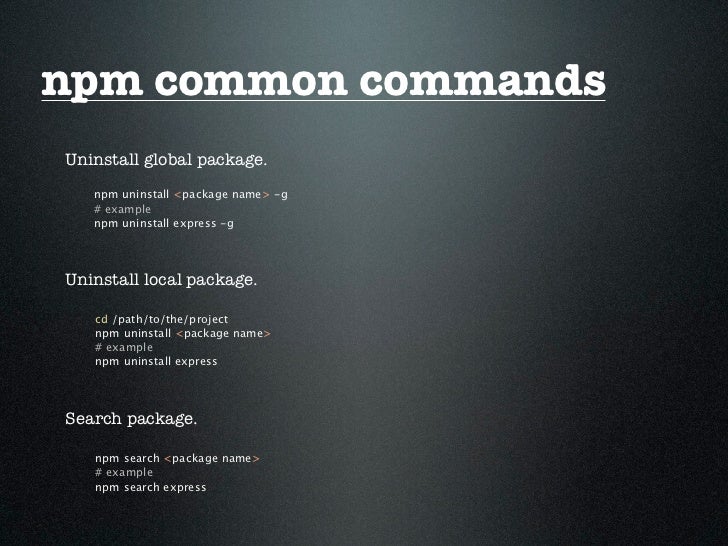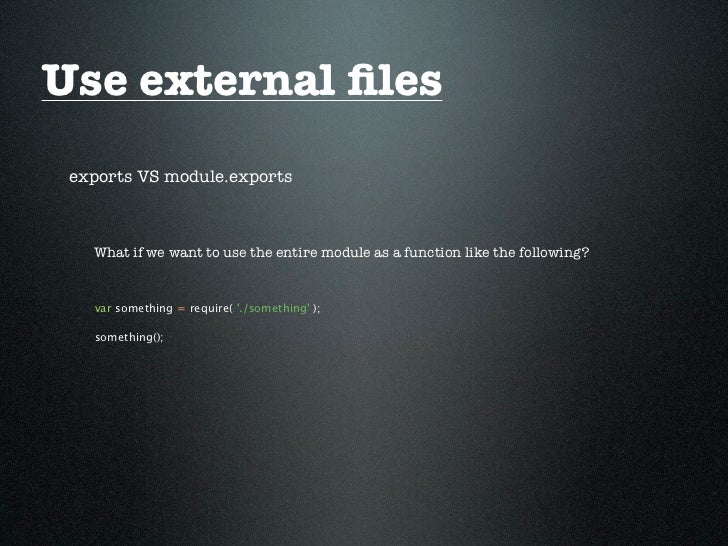

Save time, reduce risk, and improve code health, while paying the maintainers of the exact dependencies you use. The maintainers of Commander and thousands of other packages are working with Tidelift to deliver commercial support and maintenance for the open source dependencies you use to build your applications. Commander for enterpriseĪvailable as part of the Tidelift Subscription
#Nodejs command line arguments for free#
The main forum for free and community support is the project Issues on GitHub. (For older versions of Node.js, use an older version of Commander.) The current version of Commander is fully supported on Long Term Support versions of Node.js, and requires at least v14. deprecated features still supported for backwards compatibility.There is more information available about: $ PORT=80 extra -donate -free-drink Options: ) Additional documentation Allowed choices are small, medium, large.

Pass string as argument to node instead of file path. $ extra -drink huge error: option '-d, -drink ' argument 'huge' is invalid. While running the command, make sure you are in the same directory which contains the app.js file. Note, however, that using -preserve-symlinks can have other side effects. $ extra -help Usage: help Options: -t, -timeout timeout in seconds (default: one minute) -d, -drink drink cup size (choices: "small", "medium", "large") -p, -port port number (env: PORT) -donate optional donation in dollars (preset: "20") -disable-server disables the server -free-drink small drink included free -h, -help display help for command The -preserve-symlinks command-line flag instructs Node.js to use the symlink path for modules as opposed to the real path, allowing symbolically linked peer dependencies to be found. Debugging stand-alone executable subcommandsįor information about terms used in this document see: terminology Installation.Other option types, negatable boolean and boolean|value.Read this in other languages: English | 简体中文 /en/knowledge/command-line/how-to.The complete solution for node.js command-line interfaces.It can really make this much easier and with lesser code.

You can also use this way to take flags from the command line like -s,-o ,-help, etc, like in my ().īut, a better way would be to use a third party library likeyargs`. like process.argv, process.argv, etc.īut a nicer way would be to remove the first two elements from the array like so You can now take the arguments with indexes 2, 3, 4, etc. The second element is the file you're running. Have a look at the example below to understand it better. The first element of the array is the Node Executable file in your machine. Node.js provides this array in the form of a process.argv for each running process. ExampleĬommand Line node index.js arg1 arg2 arg3 NodeJS exposes an array of argument values in the form of process.argv. In Node.js, all the command-line arguments given to the shell are forwarded to the process in an array called ‘argument values (argv).’ Later Node.js uses this array for every running process in the form of process.argv or you can say arguments are by default stored in the process.argv. process.argv returns an array that contains the absolute path of Node.js js executable as the first argument, the absolute file path of the running script, and the command line arguments as the rest of the element. You can take certain arguments you need as variables, certain flags, etc. I would like to know how I can create a 'command sequence' like the one in the image below, I'm using the TELEGRAF module in nodejs. In Node.js if you want to print the command line arguments then we can access the argv property on the process object. Taking arguments from the command line is very common.


 0 kommentar(er)
0 kommentar(er)
